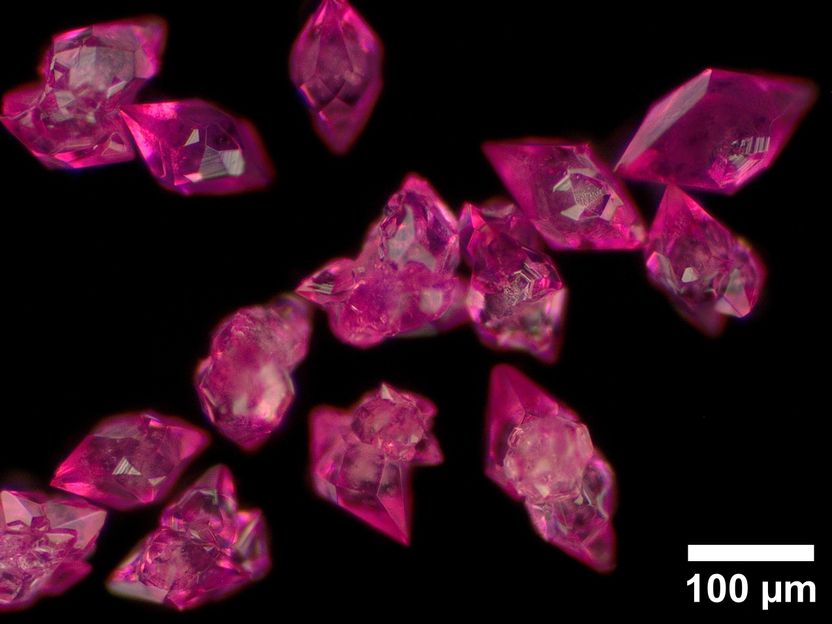Electrocatalysis: Iron and Cobalt Oxyhydroxides examined at BESSY II
A team led by Dr. Prashanth W. Menezes (HZB/TU-Berlin) has now gained insights into the chemistry of one of the most active anode catalysts for green hydrogen production. They examined a series of Cobalt-Iron Oxyhydroxides at BESSY II and were able to determine the oxidation states of the active elements in different configurations as well as to unveil the geometrical structure of the active sites. Their results might contribute to the knowledge based design of new highly efficient and low cost catalytical active materials.

LiFex-1Cox Borophosphates have been used as inexpensive anodes for the production of green hydrogen. Their dynamic restructuring during OER as well as their catalytically active structure, have been elucidated via X-ray absorption spectroscopy.
P. Menezes / HZB /TU Berlin
Very soon, we need to become fossil free, not only in the energy sector, but as well in industry. Hydrocarbons or other raw chemicals can be produced in principle using renewable energy and abundant molecules such as water and carbon dioxide with the help of electrocatalytically active materials. But at the moment, those catalyst materials either consist of expensive and rare materials or lack efficiency.
Key reaction in water splitting
A team led by Dr. Prashanth W. Menezes (HZB/TU-Berlin) has now gained insights into the chemistry of one of the most active catalysts for the anodic oxygen evolution reaction (OER), which is a key reaction to supply electrons for the hydrogen evolution reaction (HER) in water splitting. The hydrogen can then be processed into further chemical compounds, e.g., hydrocarbons. Additionally, in the direct electrocatalytic carbon dioxide reduction to alcohols or hydrocarbons, the OER also plays a central role.
Electrocatalysts for the Oxygen Evolution Reaction
A highly promising class of electrocatalysts for OER are Cobalt-Iron Oxyhydroxides. The scientists studied a series of helical LiFe1-xCox borophosphates, which reconstruct under OER conditions into active Cobalt-Iron Oxyhydroxides, at BESSY II with different in situ spectroscopy techniques to determine the oxidation states of the elements Cobalt (Co) and Iron (Fe), as well as their active structure.
Iron: higher oxidation states and shorter bond distances
“Fe plays an important role in Co-based OER catalysts. However, the exact reason for this is still under debate. Most studies assume/measure Fe in lower oxidation states (+3) as a part of the active structure. In our case, however, we could show Fe in oxidation states ≥ 4 and shortened bond distances which provide us a better understanding of the catalytically active species ”, Menezes points out.
Electrocatalysts facilitate the charge transfer from the substrate (here water) to the electrodes, which mostly involves a change of the transition metal oxidation states. However, these oxidation state changes are sometimes too quick to be detected, which makes it hard to understand the working principle of the catalyst especially when it contains two potentially active elements.
This work emphasizes the geometrical structure of the active sites and on the redox behaviour of the two participating elements (Co and Fe in the present case). Such an understanding helps to enable design guided development of catalysts on a molecular level. “We hope that the detailed electronic and structural description can substantially contribute to the improvement of OER catalysts”, Menezes says.
Original publication
Original publication
Lukas Reith, Jan Niklas Hausmann, Stefan Mebs, Indranil Mondal, Holger Dau, Matthias Driess, Prashanth W. Menezes; In Situ Detection of Iron in Oxidation States ≥ IV in Cobalt-Iron Oxyhydroxide Reconstructed during Oxygen Evolution Reaction; Advanced Energy Materials (2023)
Topics
Organizations
Other news from the department science

Get the chemical industry in your inbox
By submitting this form you agree that LUMITOS AG will send you the newsletter(s) selected above by email. Your data will not be passed on to third parties. Your data will be stored and processed in accordance with our data protection regulations. LUMITOS may contact you by email for the purpose of advertising or market and opinion surveys. You can revoke your consent at any time without giving reasons to LUMITOS AG, Ernst-Augustin-Str. 2, 12489 Berlin, Germany or by e-mail at revoke@lumitos.com with effect for the future. In addition, each email contains a link to unsubscribe from the corresponding newsletter.





























































